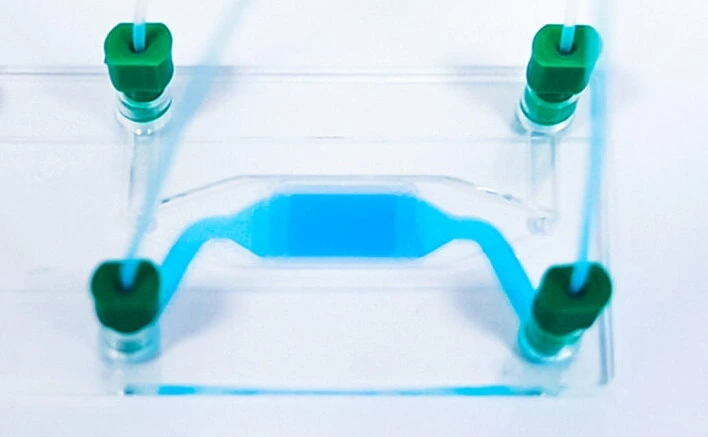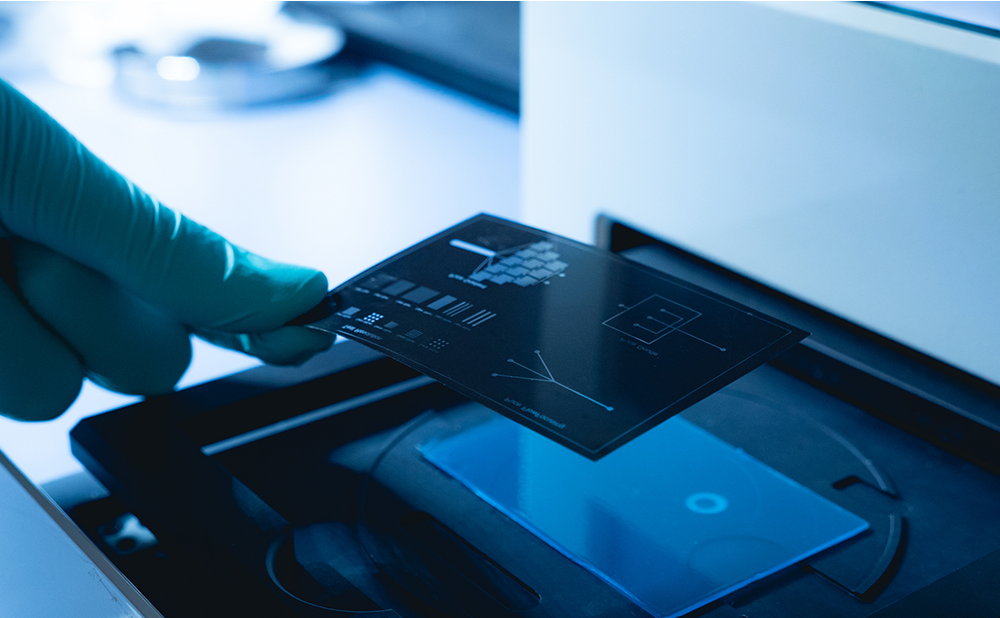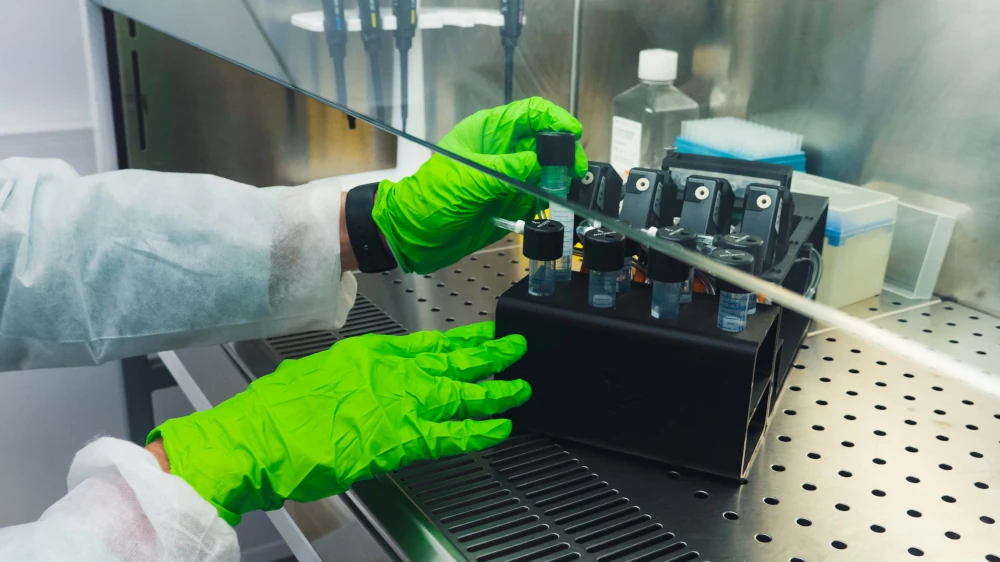Skin-on-a-Chip
Reproduce the dynamic extracellular environment of the skin with ease
Compatible with air-liquid interfaces
Flow air or liquid through your model at your convenience
Compatible with teer measurements
Add your own TEER sensing device
Compatible with live cell imaging
Keep ideal flow conditions on top of the microscope
Image Credit: Blood clot forming over a wound. David Gregory & Debbie Marshall. Licence: Attribution 4.0 International (CC BY 4.0)
Skin-on-a-chip pack setup
Our technology offers a versatile platform for creating skin-on-a-chip models that mimic the microenvironment of human skin and keep ideal conditions for long-term experimentation. Our technology enables the study of skin biology and drug responses with the flexibility of adding your preferred device and gathering data with the most relevant assay for you, be it TEER, microscopy, or biochemical.

The skin-on-a-chip pack includes:
Flow sensor (Galileo, MIC)
Recirculation bridge
Level sensors
Software (Galileo user interface)
Flow controller
Several falcon reservoirs
Tubings and fittings
Microfluidic ChipShop Fluidic 480
User guide
Check our automated cell culture platform for more details on an integrated approach!
A little more about the suggested chip: Fluidic 480
The fluidic 480 cross-flow membrane chip from Microfluidic ChipShop comprises two in- and outlet ports above and below the membrane that allow molecule transfer. Different pore sizes, materials, and chip geometries with more inlets are also available.

- Suitable for metabolic studies, cell co-culture, and organ-on-chip experiments
- Compartments divided by a permeable membrane
- Membrane pores from 8 to 0.2 µm
- Chip available in TOPAS or PS
- Interaction area of 36mm2
- Connectors: mini Luer
Other compatible chips include Fluidic 568 and Fluidic 846.
Compatibility of skin-on-a-chip pack
Our skin-on-a-chip Pack was designed to be compatible with commercially available or homemade chips (specific adaptors might be required) and the most common supernatant assays. If you have a particular chip or assay that is not listed, please contact us!
Chips


PMMA Device Station
From mold development to high-resolution PMMA chip fabrication
✓ Fast process
✓ Multiple applications
✓ Simple and innovative setup
PMMA
Synvivo
And many more!
Assays
TEER
Immunochemistry analysis
Extracellular acidification rate
Toxicity assays
And many more!
Skin-on-a-chip applications
- Drug discovery and development: Our skin-on-a-chip model can test the efficacy and toxicity of new drugs or drug combinations for treating skin diseases such as psoriasis, eczema, and skin cancer. This could speed up the drug development and lead to more effective patient treatments.
- Personalized medicine: By using patient-derived cells and tissues in the model, it may be possible to develop customized treatment plans for patients with skin diseases. This could improve treatment outcomes and reduce side effects.
- Disease modeling: The model could be used to study the underlying mechanisms of skin diseases and to develop new hypotheses about the diseases. This could lead to new insights and discoveries that could ultimately improve our understanding of skin diseases and lead to new treatments.

- Preclinical testing: The skin-on-a-chip model could be used to test the safety and efficacy of new drugs before they are tested in humans. This could reduce the number of animals used in preclinical testing and improve drug testing accuracy.
- Cosmetics testing: Our skin-on-a-chip model could be used to test the safety and efficacy of cosmetic products, such as creams and lotions. This could reduce the need for animal testing and improve the accuracy of cosmetic testing.
We have recently published a review about the different organ-on-a-chip models and current innovations.
Customize your pack
We offer compatible instruments for standard commercialized chips from various brands. We can customize your pack to suit your specific needs with guidance from our specialists, who will suggest the best instruments and accessories. We’ll also help you set up the perfusion platform.
Frequently asked questions
Can I order a pack?
Since Packs are products that are still being developed, we have a few eligibility criteria to maximize their success rate. A discussion with our experts is needed to determine your specific needs to offer you a personalized response.
Can the platform be sterilized/autoclaved?
Yes, we have developed a simple protocol for sterilization and cleaning that is provided along with the user guide.
Can a pack be customized based on my specific application?
Yes! Our experts will establish which instruments are best suited for your application, such as the type of flow sensor or the number of flow controller channels you need to perform your experiment. Contact us using the “talk to our experts” green button above.
Can I buy individual instruments?
Our instruments are in beta testing phase and can be tested as a pack or individually, so get in contact with our team to know how our beta testing program works.




